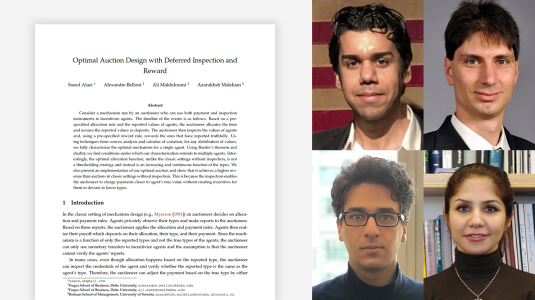-
AISTATS 20222022In many contexts it is useful to predict the number of individuals in some population who will initiate a particular activity during a given period. For example, the number of users who will install a software update, the number of customers who will use a new feature on a website or who will participate in an A/B test. In practical settings, there is heterogeneity amongst individuals with regard to the
-
The Web Conference 20222022A/B tests serve the purpose of reliably identifying the effect of changes introduced in online services. It is common for online platforms to run a large number of simultaneous experiments by splitting incoming user traffic randomly in treatment and control groups. Despite a perfect randomization between different groups, simultaneous experiments can interact with each other and create a negative impact
-
ICML 2022, UAI 2022 Workshop on Advances in Causal Inference2022We study the problem of observational causal inference with continuous treatment. We focus on the challenge of estimating the causal response curve for infrequently-observed treatment values. We design a new algorithm based on the framework of entropy balancing which learns weights that directly maximize causal inference accuracy using end-to-end optimization. Our weights can be customized for different
-
The Journal of Finance and Data Science (JFDS)2021We present a simple and effective methodology for the generation of lexicons (word lists) that may be used in natural language scoring applications. In particular, in the finance industry, word lists have become ubiquitous for sentiment scoring. These have been derived from dictionaries such as the Harvard Inquirer and require manual curation. Here, we present an automated approach to the curation of lexicons
-
The Journal of Financial Data Science Summer2021The authors enhance pretrained language models with Securities and Exchange Commission filings data to create better language representations for features used in a predictive model. Specifically, they train RoBERTa class models with additional financial regulatory text, which they denote as a class of RoBERTa-Fin models. Using different datasets, the authors assess whether there is material improvement
Related content
-
June 23, 2022Two-day RecSys workshop that extends the popular REVEAL to include CONSEQUENCES features Amazon organizers, speakers.
-
May 16, 2022Matt Taddy, vice president of Amazon’s Private Brands business, is the coauthor of Modern Business Analytics: Practical Data Science for Decision Making, a primer for those who want to gain the skills to use data science to help make decisions in business and beyond.
-
March 22, 2022Amazon Scholar Alexandre Belloni discusses the implications of auction design on digital goods.
-
January 7, 2022Amazon Scholar David Card and Amazon academic research consultant Guido Imbens talk about the past and future of empirical economics.
-
December 13, 2021Amazon Research Award recipient Éva Tardos studies complex theoretical questions that have far-ranging practical consequences.
-
November 17, 2021The paper by Özer and his co-authors examines the role of earmarking and transparency on donors and their donations.







